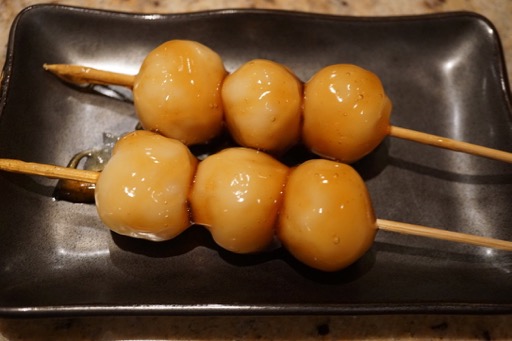Recently, we started getting Asian groceries from Weee, and found a leafy green vegetable called “Tang Ho 茼蒿, chrysanthemum green”. In addition, I also found they had a product called “Little Sheep Marbled Beef Sliced for Hot Pot”. So we got both to try them for sukiyaki. The package indicated the beef was sold by a company called Little Sheep Company (子羊). We learned that this company runs Mongolian hot pot chain restaurants and also sells meat like the one we just got. The Chinese writing on the package indicated the meat was “Wagyu 和牛” or Japanese beef but did not indicate what country the meat actually came from. Nonetheless it was just the right thickness for sukiyaki and had some marbling, (although not as much marbling as shown in the Weee website picture).
*Although spinach can be substituted for edible chrysanthemum it does not have the unique flavor which characterizes shungiku and is such an integral component of the sukiyaki taste experience. Shungiku is relatively easy to grow from seeds and we were able to raise it for some years in our herb garden. Then the rabbits discovered they liked it too. They ate not only all the edible mum out of the herb garden but every other chrysanthemum related plant we had in the yard edible (for us) or not. As a result we have not been able to raise mums of any kind.
The below are the ingredients I prepared for the sukiyaki. From 12 O’Clock clockwise are sliced onion, Tofu, “fu” 麩 gluten cake (flower-shaped), shira-taki*, shimeji and shiitake mushrooms and the center is enoki mushroom, beef and the green is chrysanthemum.
*Thread form of konnyaku, washed and blanched and cut into shorter segments.
*Thread form of konnyaku, washed and blanched and cut into shorter segments.
The picture below shows a detail of the meat. It is frozen in rolls. I served half of the package (about half a pound).
For the chrysanthemum green, I removed the leaves from the stem, washed and blanched them. Although the plant looked slightly different it tasted exactly like Japanese “shungiku”.
Using these ingredients we had sukiyaki using a cast-iron sukiyaki pot and our new table-top induction cooker. The seasonings were my usual sugar, soy sauce, and sake (Kansai style 関西風) as opposed to using the premixed seasoning liquid “warishita” 割下 (Kanto style 関東風).
We really enjoyed this sukiyaki. The meat was not the best but certainly much better than what we had been previously getting. In addition, the price was very reasonable. Although the shungiku looked different, it tasted the same as the Japanese version and was very good. The assorted mushrooms (all came from Weee) are also very good. So, we are happy that the ingredients essential for making good sukiyaki can be bought at Weee.



















































